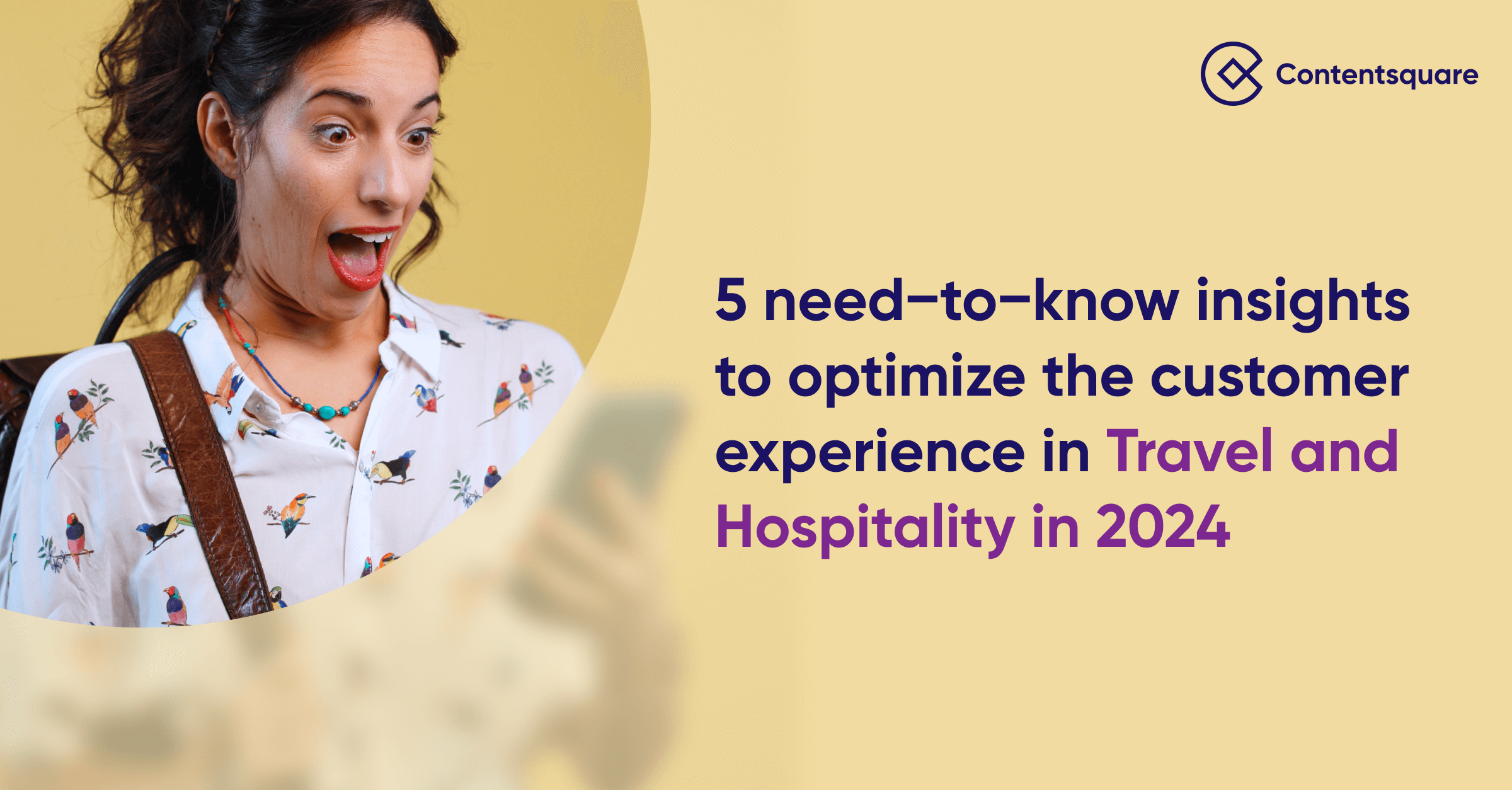Digital teams, it’s time to turn up your customer-obsessed mindset

Today’s customers are loyal to experiences, not brands. Which means if they can get the same product elsewhere with a simpler buying cycle, they will—even if your offering is slightly cheaper (yes, really). Customers want ease and simplicity, often above all else.
Unsurprisingly, then, brands are rethinking their digital engagement tactics and increasing their investment in systems and processes which help provide those deep customer insights.
What’s more, as we look to a post-pandemic era of recovery, some of the lifestyle adjustments and increased reliance on digital will stick around for good—which means understanding exactly what makes customers click is paramount to success.
A shifting focus
A report by Accenture describes this as a shift from transactions to relationship-based interactions, recommending that brands focus their customer engagement on reassurance and confidence-building throughout the buying cycle.
Customers no longer want to follow a purely transactional and linear path. They want richer experiences: to do their own research through multiple channels, to build community, to be incentivized, and to engage authentically with brands almost as if they were real people. It’s all about putting the human experience at the forefront because consumers are more likely to trust a brand they believe is authentic and powered by humans. And more trust means more conversions.
The proliferation of WhatsApp-based customer service is a testament to this, with customers increasingly comfortable chatting with brands through means of communication previously held only for family and friends. It’s official: we all want more human connection.
It’s time to turn up the customer obsession
Many brands have moved beyond being customer-focused, instead embracing a customer-obsessed mindset: intent on understanding their customer’s buying behaviors, experiencing the product through their eyes, and focusing so heavily on building a connection that they can predict and even influence their buying cycles. And they do all this digitally, too.
Netflix is a great example of this: by logging and analyzing every customer interaction, they predict viewing preferences and deliver personalized recommendations to every customer. And what do we do? We keep coming back for more. And we keep watching the programs that are recommended to us because they’re actually relevant. They’re intuitively using our data to build a service that caters to us as individuals, consistently, and makes our lives easier.
And so customer obsession is about increasing retention and loyalty, too. The Pareto Principle in customer success states that 80% of your revenue is derived from 20% of repeated or loyal customers. Yet according to Forrester, only 15% of companies are customer-obsessed. It’s clear that more companies need to adopt this approach for strong post-pandemic recovery and indeed, survival.
But wait, what’s the hold-up?
Of course, a move towards next-level customer-centricity is no small feat. Many organizations just don’t have the vital data required to get to this next step of the journey.
Customer insights (CI) pros have previously relied on traditional methods, working on aggregated data to understand consumer behavior and support marketing and eCommerce functions. However, digital transformation is now moving on beyond these functions, spurred on by the disruptions of the pandemic and evolving customer needs. We need our customer insights to be more diverse.
But there are many barriers to progressive and positive change in the customer experience world. Let’s take a look at some of them…
Common barriers to a customer-obsessed mindset
- Lack of channel integration
Historically, enterprises have piecemeal marketing tactics to develop customer engagements. For example, they may build websites or mobile apps for individual products. They may run several campaigns and associated landing pages or events.
How do you bring all this customer data together to build meaningful insights? Is this even possible? Chances are that all these digital touchpoints aren’t consolidated, given how isolated each engagement type is. Established engagement channels are not designed to be integrated, creating a massive barrier to your customer obsession journey.
2. Lack of speed to insights
Moreover, real-time customer interactions demand real-time data and analytics. How else can you strike while the iron is hot and optimize interactions based on accurate and timely insights?
This also leads to the consideration of adopting a hybrid approach to understand digital engagements. While firms are merging online and offline customer streams to create a hybrid enterprise, customer intelligence pros are recognizing that the collection of customer data should be channel-agnostic.
But many digital analytics practices are siloed and fixated on channel dashboard reporting—a tool that’s no longer keeping up with the dynamic pace of modern business, particularly when the pandemic forced business decisions to be made at a dizzying pace.
Put simply, no one has time to wait for a weekly or monthly dashboard report to plan the next move to satisfy and retain customers in real-time.
So how exactly do you overcome the cost of failing to meet customer expectations? And how can your customer insights become more unified towards the greater good?
Say hello to advanced digital intelligence
That’s where a modernized digital intelligence practice is a game-changer. Advanced software—like Contentsquare— can break down walls between digital data and analytics, helping a range of digital teams gain invaluable, real-time insights about their customers from multiple data sources.
The digital intelligence difference is also in synchronizing different processes and technologies to support a cohesive practice. This includes the use of Artificial Intelligence (AI) to operate at the speed needed to support real-time interaction experiences.
Listening to your customers has a wide-ranging impact; according to Forrester, being customer-obsessed is the key to post-pandemic recovery and revenue growth. So it makes sense that continuous improvement of customer experience and the buyer’s journey depends on accurate, united data.
Choosing a digital intelligence solution is an important decision, but one that will help maximize the value of your data for faster, clearer decision-making. In today’s disruptive times, building a digital intelligence vision brings opportunities to continuously enhance the customer journey and drive more meaningful interactions.
Get in touch
If you’re interested to find out more about how digital intelligence can help to scale and revolutionize your business, get in touch with us today. One of our team would love to talk to you about how our software can help you do your job better, and delight your customers.



